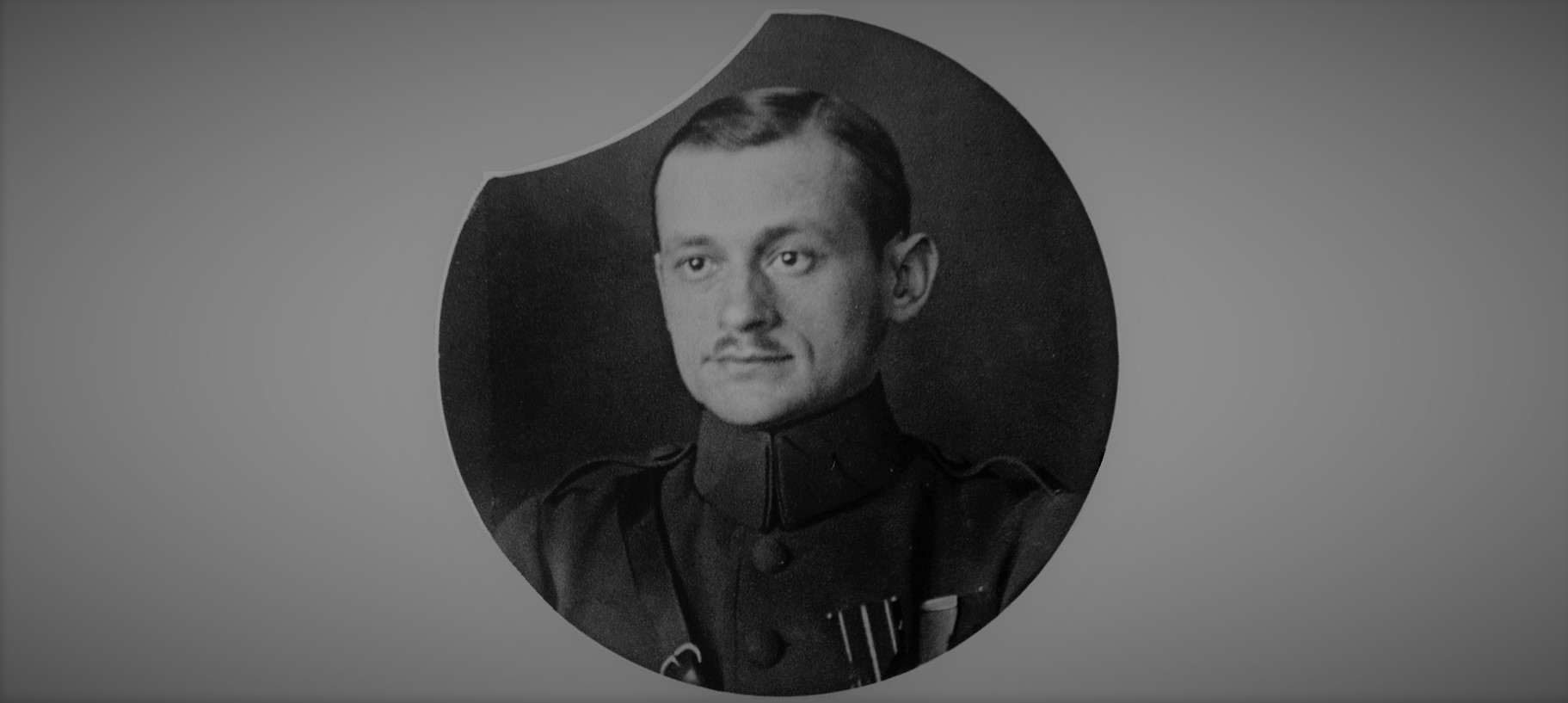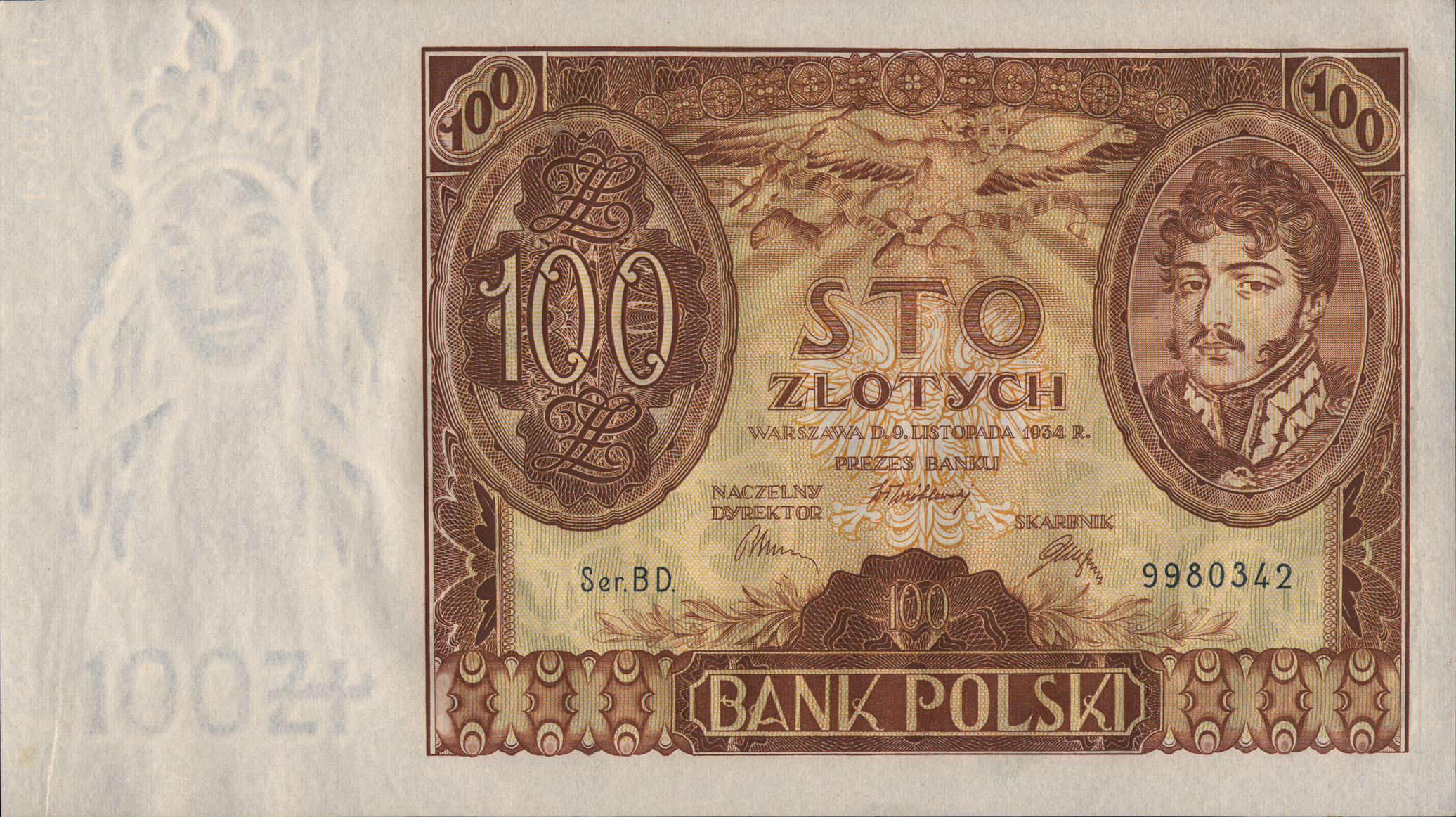On the morning of 15 March 1939, German troops entered the western parts of Czecho-Slovakia, beginning the country’ s occupation. The next day, Hitler arrived in Prague and announced the establishment of the Protectorate of Bohemia and Moravia “under the protection” of the Third Reich. As a result of German pressure, Slovakia declared state sovereignty on 14 March and Czecho-Slovakia officially ceased to exist.
by Andrzej Krawczyk
Many people, especially those from the younger generation who had been brought up on the slogans of democracy and ties with France, did not want to come to terms with the new circumstances and the imposed status of citizens of the Third Reich. For two years, Czech society lived in the shadow of the German minority’ s irredentism in about 1/5 of the country’ s territory and under the constant threat of war. At least two crises (in May and September 1938), watched closely throughout Europe, had sensitized Czechs to the German threat and led a part of its society to resist. After President Edvard Beneš resigned and the Czechoslovak government and parliament adopted the Munich Conference’ s decisions, the state began to rebuild its system in an autocratic direction. The new name was supposed to be a sign of the changes: from Czechoslovakia to the Czech-Slovak Republic (commonly known as the Second Republic).
The atmosphere of resistance was counterbalanced by the tradition of many centuries of coexistence with Germany and the memory of the fact that the Czech lands were part of the Austrian monarchy until 1918. Another significant factor was the fact that the protectorate’ s establishment was formally (though forcibly) accepted by the legal Czecho-Slovak authorities. It should also be remembered that in the Czech Republic there was a visible group of refugees from the Third Reich, quite active in Prague, which partially tried to emigrate further – to Western Europe or the Soviet Union (Communists). These German emigrants provided some inspiration.
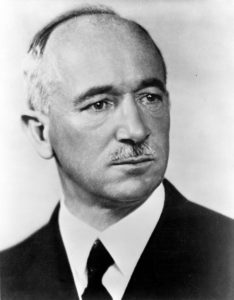
Direction of emigration
Several thousand people decided to flee the country for political reasons and to fight the Third Reich. Czech citizens – Jews, who feared racial persecution, were a special group of refugees. Among the escapees, attention was drawn to a group of airmen, not only pilots, who followed the call to emigrate issued by the Aviators’ Union (a Czechoslovak organization that continued throughout 1939).
Poland was the natural direction of escape and their first destination. Polish-Czechoslovak relations were not the best in the twenty years between the First and the Second World War. Both sides felt they had been damaged by their neighbor – Poles bitterly recalled the Czech attack on Cieszyn Silesia in January 1919 and the Czechs remembered the fresh, forced loss of Cieszyn Silesia after the Munich Conference in October 1938. On the other hand, there was also awareness of the proximity between the Poles and the Czechs and the common German threat. The border around Ostrava and the Beskids was relatively easy to cross illegally (although some were caught trying to cross it), and an important political and cultural center, such as Krakow, was only 100 km from the border. In addition, a former Czechoslovak consulate in Krakow refused to submit to the Germans, and its patriotic officials helped the refugees by negotiating help for them in Poland or gathering support for their travel to friendly France.
The escapes to Poland began a few weeks after 15 March 1939. Professional Czech service members were still in service under a special demobilization commission, and therefore they appeared at the border a little later. The first six military escapees arrived in Krakow on 30 April. A few days later, on 5 May, the group numbered 52 people. In agreement with and on the advice of consulate employees, they formally organized the “Foreign Military Group of Czechoslovakia” in order to apply for the creation of a military unit alongside the Polish Army. From a historical point of view, it was the beginning of the Czechoslovak army’ s revival in exile.
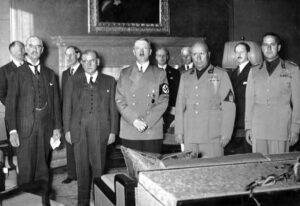
In those days, Krakow was full of refugees from Czechoslovakia. Those who thought about military service had to be separated from the civilians. As usual, in émigré circles, there were discussions about the vision of the planned Legion with such problems as, for example, whether to use military ranks or whether everyone should refer to each other as “brother”. A group of left-wing radicals tried to form a Soldiers’ Council and appoint a Political Commissioner to oversee the commander.
Could a Czechoslovak army be created in exile?
The Polish authorities were surprised by this initiative and afraid that the creation of such a military unit could be seen by Germany as a violation of international law to be used as a pretext for, for example, breaking diplomatic relations or justifying an invasion. However, it was decided to immediately assign the Czech refugees a building in Krakow (the Tourist House on the Main Square) and provide them with food.
When the number of refugees increased, and lines of refugees formed every day in front of the consulate building in Krakow, it was decided in June to assign them to a small training camp in Bronowice Małe near Krakow (it officially began to function on 7 July). The Polish authorities began to consider assigning the Czechs a thousand uniforms. For several days, the only uniforms were worn by the two Slovaks who had escaped from the newly formed Slovak army. For the time being, the newly formed units had ten rifles for training and guard service.
The Polish military authorities then began talks with the French and British authorities on the possible admission of these people and the establishment of a Czechoslovakian division in one of these countries. Only the French decided to accept a Czech group of several hundred people into the Foreign Legion, while both countries expressed their interest in already trained pilots. It was agreed that the Poles would organize several military sea transports for Czechs and possibly Slovaks, with priority given to aviators and aircraft mechanics. Between 22 May and 21 August, six ships with Czech volunteers for the army left Gdynia. In terms of nationality, the Czechs definitely dominated. The group of Czech Jews was also significant, while the Slovaks and Ruthenians were a clear minority. Altogether, however, this operation evacuated approximately 1,220 people, including 477 soldiers of various aviation specialties (airmen and ground staff).
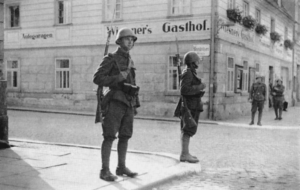
The escape on 7 June 1939 of eight airmen in four planes from the Slovak state’ s newly created troops was a spectacular event. The Slovaks took off from the airport in Piešťany; three flew to Dęblin, while one failed and was forced to land in Krakow. A group of several dozen airmen and engineers who wanted to join the Polish aviation troops directly was directed to the Aviation Training Center No. 1 in Dęblin, where most of them were formed into the Czechoslovak Reconnaissance Squadron with 11 unarmed observation and liaison planes. In September, the squadron’ s planes made about 500 reconnaissance and evacuation flights in the Lublin and Subcarpathian regions.
The Czech and Slovak Legion is established…
There were already about 1,000 people in Bronowice, despite the departure of subsequent groups to Gdynia. There was the question of the Czech group’ s command, as there were extremely few officers among the escapees. One of the lieutenants present was appointed as the first commander. However, as soon as the senior officer, Lieutenant Colonel Ludvík Svoboda (hidden in a freight train that crossed the Polish border on 11 June), was nominated as the Legion commander – the Czechoslovak group was unofficially established.
Svoboda, a regiment officer in Moravia, would later (from July 1941 onwards) be the Czechoslovak troops’ deputy commander in the Soviet Union as they expanded successively into a battalion, a brigade and a corps. In September 1944, the Soviet First Ukrainian Front commander, Ivan Konev, disregarding the decisions of the Czechoslovak government and the regulations, dismissed the corps commander appointed by the government in exile in London, and appointed Svoboda – then a general – in his place. It was probably related to his cooperation with the Soviet secret services and the trust that the Soviets had in him. In March 1968, as a part of the democratization process during the so-called “Prague Spring”, he was elected president of Czechoslovakia as a non-party person (in fact, he was a so-called secret member of the Communist Party of Czechoslovakia).
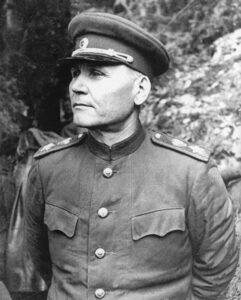
Shortly before the outbreak of the war, the Polish authorities decided to transform the Legion into a real military unit, but this proved impossible to implement in practice. On 30 August 1939, 630 soldiers with Svoboda were transported by rail to Leśna near Baranowicze, located in the east of Poland at that time. In Leśna there was a so-called military town inherited by the Polish Army from the former tsarist army. It was a large training ground where various units were stationed, and it was there that the regular formation and arming of the Legion would begin, and the structure of the two battalions would be shaped. There were still a little over 200 people in Bronowice, and individuals commuted to Leśna in small groups in the first days of the war.
War!
On 3 September 1939, the President of Poland, Ignacy Mościcki, declared a formal decree on the creation of the Czech and Slovak Legion, and the Commander-in-Chief, Marshal Edward Śmigły-Rydz, issued a special message “To Czech and Slovak Soldiers”: “Wherever you are, Czech and Slovak, I call you on behalf of my nation that you would fight the oppressor.” General Lev Prchala, known for his pro-Polish attitude, was appointed the Legion commander. He came from Cieszyn, Silesia, and was one of the most important officers in the Czechoslovak military; a three-star general and a candidate for chief of the General Staff, in the spring of 1939 he served as a commander of troops in Subcarpathian Ruthenia (the equivalent of the commander of a Military District). General Prchala was one of the few Czechoslovak commanders who tried to organize resistance against the Hungarian troops entering southern Slovakia. After three days, he had to escape to the Protectorate, and in May, he crossed the “green border” to Poland.
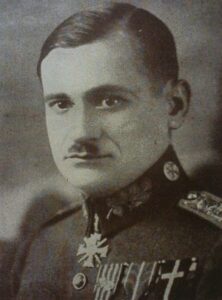
On the night of 11/12 September, an alarm was announced, and the Legion was ordered to move south to the so-called Romanian suburbs, where Poles organized the last lines of defense against the German invasion. They moved mainly at night. On 15 September, at the request of the Tarnopol garrison command, the Legion delegated all three heavy anti-aircraft machine guns (with 24 service soldiers) to the city’ s anti-aircraft defense. After one of the air raids, the Czechs reported that one plane was shot down. This was probably the only case of direct combat by the Legion during the early stages of the invasion in September 1939. Two soldiers of the Legion were killed on 15 September in the village of Hłuboczek Wielki near Tarnopol during the bombing. The irony of history was that they were most likely killed by bombs dropped by the supporting Luftwaffe bombers of the German ally – the Slovak State, which happened only a few times during the entire invasion.
“Hospitality” of the Soviets
On 18 September, most of the Legion’ s troops moved to the village of Rakowiec near Tarnopol, where at dawn on 19 September, they were surrounded by Red Army troops. All 725 soldiers were transported to a camp in Jarmolińce near Kamieniec Podolski, and then to Suzdal and Oranki, cities east of Moscow. The USSR authorities probably did not know how to treat those people who declared themselves to be Czechoslovak soldiers: prisoners, prisoners of war, interned foreigners or, as it was sometimes written after the war, guests of the USSR? They were kept in the aforementioned two camps: they could move around in their immediate vicinity, but they could not leave the village and had to attend all assemblies. We know that the Head of the NKVD Beria, in February 1940, ordered that Czechs be treated “better than prisoners of war” (at the time, this term could only refer to Poles and Finns).
From March 1940 on, the Soviets released the interned Czechs in 11 groups of several dozen men and allowed them to leave the USSR on ships through Odessa. Most of these ended up in Czechoslovak units in Great Britain, and more than 50 were even returned to the Polish unit – where they became soldiers of the Czechoslovak battalion in the Polish Carpathian Rifle Brigade and took part in the Siege of Tobruk at the end of 1941. When, on 22 June 1941, the Germans attacked the Soviet Union, there were still 93 soldiers in the internment camp, including Svoboda. Svoboda himself had probably already been selected as a possible candidate for the Czechoslovak army commander in the USSR, should it ever be created, and therefore was kept in some kind of reserve. The NKVD arrested at least a dozen Czech soldiers at various times for unspecified “anti-Soviet activities”. Some of them were released from prison on 22 June 1941 and returned to the Legion. A few disappeared without a trace. A small group (a dozen or so people) tried to escape, especially at the beginning in Jarmolińce, to nearby Romania. At least five were sent to “normal” labor camps.
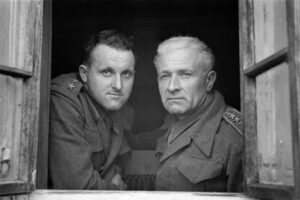
Over 300 soldiers, including General Prchala, broke through to Romania in smaller groups. Some were disarmed on the way by groups of Ukrainians from the Organization of Ukrainian Nationalists or by Soviet soldiers. Taking advantage of the chaotic situation, they managed to escape and reach the border. Prchala himself, via Yugoslavia and northern Italy, quickly reached France, where he joined emigre political life as one of Edvard Beneš’ s main opponents and competitors. After the war, he did not return to Czechoslovakia.
From a military point of view, the Legion of Czechs and Slovaks was perhaps not an exceptionally important episode. However, it was a touching example of a people determined to fight for their homeland. The existence of this Legion was also symbolic for Polish-Czech cooperation. Historically, cooperation was difficult and burdensome, but this example shows that, in the face of fundamental challenges, both nations are able to rise above current politics and stereotypical prejudices. This is an important message for the future.
Author: Dr. Andrzej Krawczyk – Polish historian, and diplomat. He was Under-Secretary of State in the Chancellery of the President of the Republic of Poland Lech Kaczyński (2005–2007), ambassador to Czech Republic (2001–2005), Slovakia (2009–2012), and Bosnia and Herzegovina (2013–2018).
Translation: Alicja Rose & Jessica Sirotin

